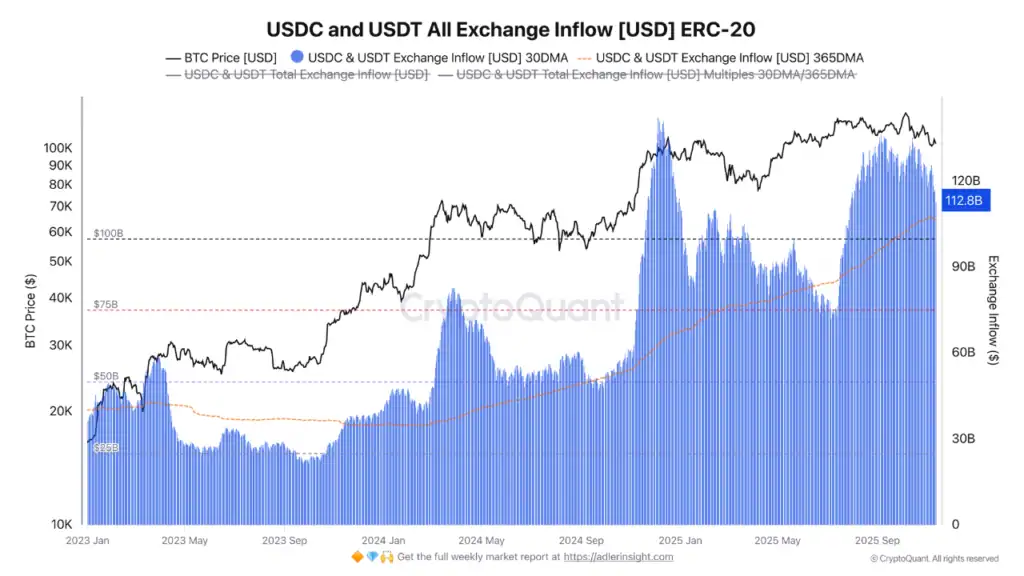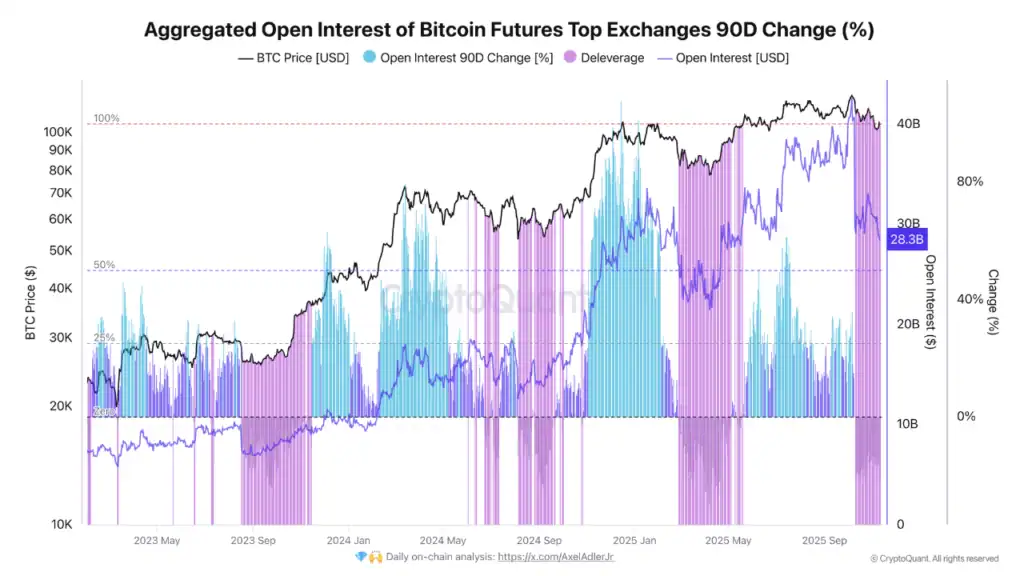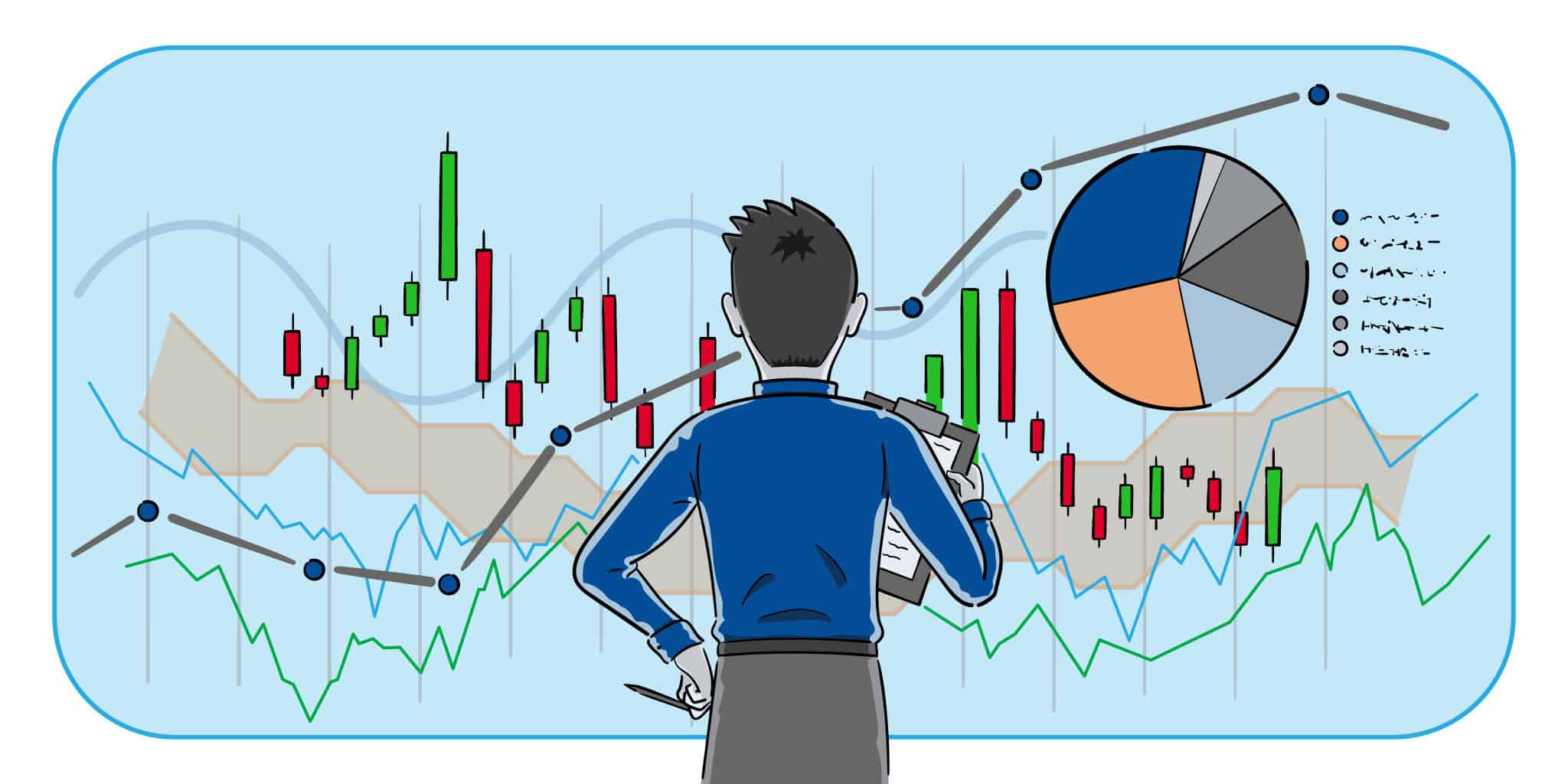
Bitcoin surpasses $103, but major investors are proceeding cautiously. On-chain data reveals liquidity buildup and signs of strategic rotation.
Bitcoin has managed to stay above $100.000 for much of 2025, and is currently trading around $103.300 after weeks of high macroeconomic volatility. However, far from triggering a massive influx of capital, the behavior of large investors suggests a more cautious strategy. Accumulation of liquidity, reduction of risk exposure, and preparation for a possible asset rotation.
On-chain data and market metrics, analyzed by CryptoQuant, point to a phase of silent reconfiguration, where caution prevails over euphoria.
Bitcoin surpasses $103K: Buy BTC hereLiquidity on hold: stablecoins and accumulation signals
One of the indicators most closely watched by analysts on the platform is the Exchange Supply Ratio (ESR) The price of stablecoins has reached 0.457, its highest level since the beginning of the year. This data, provided by CryptoQuant, reflects that a larger proportion of stablecoins are parked on exchanges, suggesting that investors are waiting for the right moment to re-enter the market.
The total market capitalization of the leading stablecoins also reinforces this reading. After a brief stagnation between October and November, the combined value is approaching $315.000 billion. Furthermore, monthly inflows of USDC and USDT into ERC-20 have remained stable, currently averaging $112.000 billion, above the annual average of $106.000 billion. data They indicate that liquidity exists, but it has not yet been aggressively deployed in the crypto market.

Source: CryptoQuant
Historically, similar configurations—a fall in the US dollar index (DXY)These factors, along with an increase in stablecoin reserves, have preceded significant Bitcoin rallies. So far in 2025, the DXY has fallen by nearly 8%, while Bitcoin has maintained its strength. The inverse correlation between the two assets, currently at -0.52, suggests that the weakening dollar is reigniting risk appetite, albeit gradually.
The dollar falls, Bitcoin holds firm: trade todaySelling pressure and deleveraging: the market's temporary brake
Despite the favorable liquidity environment, Bitcoin faces increasing selling pressureLong-term holders have begun taking profits, while short-term holders—affected by weeks of correction and volatility—are showing signs of capitulation. This scenario has created an imbalance that limits the cryptocurrency's upward momentum in the short term.
On the other hand, analysts reveal that the derivatives market, which represents between 70% and 80% of the current total trading volume, has entered a deleveraging phase since the liquidation event of October 10. Massive sell-offs have reduced excess risk, and open interest has fallen by 21% in the last three months. This pattern is similar to that observed during the corrections of September 2024 (-24%) and April 2025 (-29%).
According to analysts, these cleansing phases often precede more sustainable trend changes. By reducing leverage, the market prepares to rebuild on a more solid foundation. In this context, the current selling pressure may be nearing its end, opening the door for a new accumulation phase.

Source: CryptoQuant
Another relevant indicator for analysts is the NUPL (unrealized net profit/loss)which has fallen to 0.45, below the critical threshold of 0.5. Analysts emphasize that this level has historically marked zones of capitulation and accumulationespecially among short-term holders.
Thus, although macro nervousness and spot ETF outflows have affected sentiment, the supply of BTC held by long-term holders remains high, at around 14,2 million BTC, while stablecoin reserves have increased by $5.000 billion, reaching $160.000 billion.
BTC in the hands of holders. Accumulate todayLiquidity redistribution and market efficiency
Finally, analysts indicate that, during the last month, the total funds flow index to exchanges has fallen from 0.073 to 0.058, suggesting a general outflow of capital from centralized platformsHowever, this global trend masks a significant redistribution of liquidity. Some exchanges have increased their share of the total flow, leading to a concentration of liquidity that directly impacts price discovery.
When a larger proportion of the Bitcoin supply is concentrated on a single exchange, the order book on that platform stabilizes, which can reduce slippage on large trades. At the same time, this centralization can create arbitrage opportunities in other markets, where prices struggle to keep pace with the dominant liquidity pool.
This behavior is not driven by promotional preference, but rather by market logic: in times of uncertainty, participants tend to gravitate toward the deepest liquidity reserves. This migration reinforces the dominance of these reserves and redefines short-term market efficiency.
Holdea BTC: Selling pressure subsidesAre we in the ideal scenario to enter the Bitcoin market?
Bitcoin is stabilizing around $103.000, while technical and on-chain indicators show signs of accumulation. Liquidity is present but remains stagnant. Selling pressure, although intense, appears to be waning. And large investors, far from rushing into a sell-off, are cautiously adjusting their positions.
The inverse correlation with the dollar, the increase in stablecoin reserves, and the fall of NUPL below 0.5 configure an environment conducive to asset rotationHistorically, these conditions have preceded average rallies of +35% in the following 90 days, so for many institutional treasury managers, the $100K per BTC level could represent an entry opportunity rather than a ceiling.
However, caution remains the norm, as the market still shows uncertainty and the next move will depend on multiple macroeconomic and technical factors.
Technical analysis
Cryptocurrency Technical Analysis Course
Medium levelIn this training we have Iván González, a professional expert in investments and cryptocurrencies, to teach you how the market works and how prices affect the behavior of investors.



